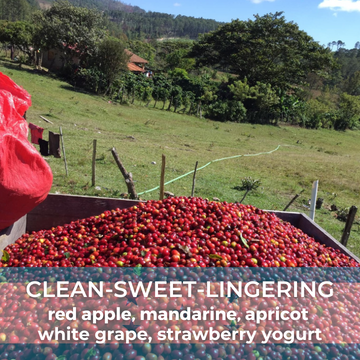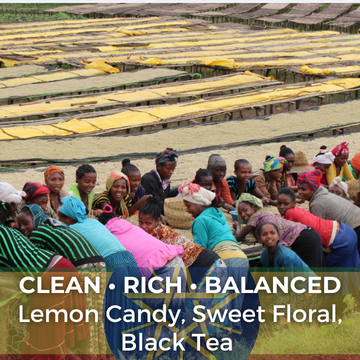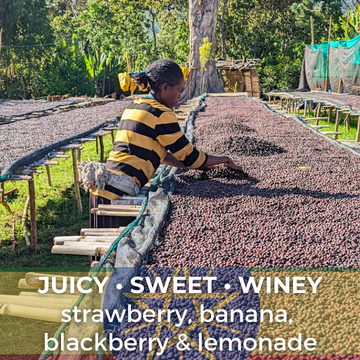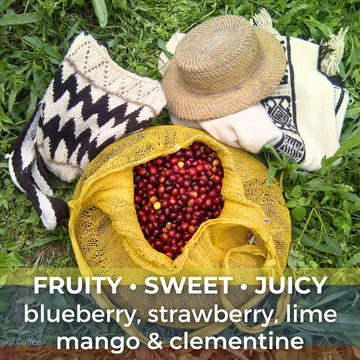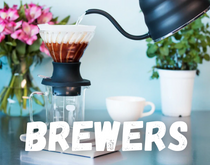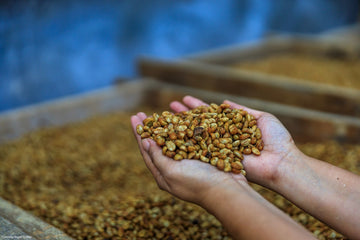Roasting Coffee with ALL your senses (including your 6th)

Whether you've just started roasting your own coffee or you've been roasting for years, it's easy to slip into bad habits. As coffee roasters, it's important to remember to roast using ALL your senses, not just your sight. And yes, we're going to include that elusive 6th sense as well!
1. Sight - 50 Shades of Brown

This one seems obvious, but it's so easy to just stare at your beans until they look the right color and call it a day. There are so many other factors you can look out for when deciding if your roast is just right. Coffee smoke, often considered just a nuisance, can tell you a lot about where the beans are in the roast. As the roast progresses, the smoke will get noticeably thicker and darker. Right around the 2nd crack, you'll notice a big puff of heavy dark smoke signalling the fine line between full city and full city plus.
You'll also notice oil on the beans as they darken. Full city should have little to no oil, full city plus will have a bit more oil spots, vienna will be quite oily and french roast will be covered in oil. REMEMBER! Your beans will get a little oilier as they rest, so always stop your roast with less oil than you want to end!
2. Smell - The good, the bad and the eww

Smell is another easy one for us to use, but requires practice and training to use effectively. Most of us know that coffee going through the drying phase of the roast smells like fresh hay and over-roasted coffee smells like charcoal. The subtle differences in the middle can be difficult to distinguish, but nearly anyone with a functional sense of smell can tell you when the coffee smells just about right!
Learning to distinguish the sightly grassy smell of a city roast from the bitter-sweet smell of a full city plus can be a bit more difficult. Like all skills, getting good at this one takes practice. Just take some time to really absorb the smells while roasting a coffee you're really familiar with and take notes. This will make you a better roaster in the long run, as well as develop your palette for cupping and tasting brewed coffee.
3. Sound - Let's get cracking!
Listening for the 1st and 2nd crack is one of the first things people learn when they begin roasting their own coffee. Being able to discern the difference between the popcorn sound of first crack and the rice krispies sound of second crack can be the difference between making or breaking a roast! Smaller roasters and popcorn popper roasters have a particular tendency to roast so quickly that the cracks run into each other. This makes it easy to carry your roast too dark if you can't tell the difference between the two.
What's a rolling crack? When the cracks of the individual beans are happening so quickly and so closely together that it sounds like machine gun fire, you've got yourself a rolling crack. Vienna roasts are usually pulled just as the 2nd crack begins to "roll" and if you turn down the temperature on a rolling 1st crack too much, you could stall your roast and end up with baked beans. Listen carefully!
4. Taste - Everyone's favorite

Taste can be utilized in two ways, the first and most obvious being tasting the sweet nectar of your labors. While I prefer my coffee black, I respect all manner of lifestyle choices, including but not limited to adding cream and sugar. Just do yourself the favor of trying a sip black first! Take notes, create a log and refine your palette. You'll thank me later when you suddenly realize the difference in taste between roasting that Ethiopian coffee at City instead of Full City Plus (mmm Blueberries!) or the difference between an under developed Sumatra and one that's just right (is that licorice?!).
Secondly, are you tasting your beans after they cool? I usually pop one in my mouth and crunch it up as soon as it's cool enough. Chewing a quick post-roast bean will give you a great idea of what it's going to taste like when it's ready to brew tomorrow and can give you a chance to try again rather than finding out in the morning you've not done this coffee justice. Also, dip a couple in chocolate while no ones looking...I won't tell.
5. Touch - Beans need love too!

Honestly, touch might be the toughest to fit in here, even more so than the the "6th sense", but I think it matters if only for one major reason: cooling. Cooling your coffee quickly is critical to arresting the thermal momentum of the beans. In English, stopping the roast exactly where you want it! If coffee isn't cooled quickly, it will continue to coast into darker roast levels, ruining all your hard work when you pulled the roast right where you wanted it.
A sure fire way to tell when the coffee has reached a cool enough level is to feel for what bakers call "blood warmth." This is the temperature of your own body, so it means that the beans will feel neither hot nor cold to you, therefore it is cool enough to be finished. That's it! No fancy thermometers, no calibration necessary, just get in touch with your coffee. REMEMBER! Use common sense and don't burn yourself. If the coffee is still cracking, smoking or otherwise less than a minute out of the roaster, it's too hot to touch...so don't try!
6. Intuition - Or gut. Or instinct. Or whatever you want to call it!

Whether you call it gut, instinct, intuition or a supernatural ability to see ghosts (just kidding about that last one), we've all got it. It's that "6th sense" you just can't quite measure or put your finger on and if you ask me, it's a critical part of being a good roaster!
When folks ask me how I know my coffee is done roasting, it's usually a long answer, but sometimes I summarize by saying "I just know!" Trust your gut and don't hesitate. If you feel like your roast is done, pull it! You'd be surprised how many times your gut gets it right when you let the details go for a bit and just trust all your senses to work together. And that's what I think the 6th sense is: that feeling that kicks in when we let our body do what it instinctively does and put all the sensory information together into one neat little package or "gut feeling."
It can take a bit of experience before this can be a reliable sense, but just like all the others, it requires practice! It also might help to think of this as the "it must be a duck" sense. Maybe you've heard the saying: "if it walks like a duck and quacks like a duck, it must be a duck." Well, if your roast smells like it's done, looks like it's done and sounds like it's done, it must be done! Don't hesitate, trust yourself, and your gut, and it won't let you down.
For more on determining roast levels using all your senses, check out our article on Roast Levels in the Learning Center!
